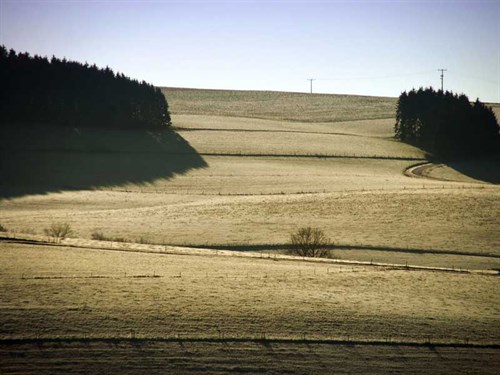Reduce winter nitrogen loss
Having enough nitrogen in farming systems is essential. But having too much of it or not managing it wisely can have significant environmental consequences.

Nitrogen plays an important role in increasing pasture and crop yields because it boosts the development of proteins in both plants and animals. Nitrogen is also a key component of green pigment (chlorophyll) in plant leaves, which is vital for photosynthesis.
But nitrogen in the form of nitrate moves readily out of the root zone during wet weather.
Now, with the coldest and wettest months of the year just around the corner, it’s important to bear in mind the need to be particularly cautious over the risks involved with applying nitrogen fertilisers to pasture or crops during winter.
Winter applications of nitrogen fertilisers are generally least effective for promoting grass growth. That’s because slow growth of pasture in winter and greater drainage can result in nitrate leaching before plants can take it up. The nitrogen can make its way to waterways where it can stimulate nuisance algal growth.
Also, lactating cows will excrete in urine about 70 per cent of the nitrogen they consume. Again, the risk of this nitrogen leaching from urine patches is much higher in winter.
Such nitrogen leaching from pastures in winter, along with phosphorus runoff, not only contaminates water bodies but mean a loss of economically valuable nutrients from the farming system.
Some of the research to mitigate nitrogen losses generally has focussed on:
growing pasture with more rooting depth for interception of nitrate
reducing the amount of time animals spend on pasture
feeding high sugar grasses to reduce the amount of nitrogen lost in urine.
Nutrient budgeting using computer models such as OVERSEER, combined with feed budgeting, enables farmers to understand how they can adjust their farm system to minimise nitrogen losses. By doing this farmers can optimise the use of nutrients and reduce the impact on the environment by working out a pragmatic nutrient management plan.
Understanding the term "response rate" helps farmers when it comes to implementing these plans.
The response rate is the amount of pasture grown in terms of kilograms of dry matter (DM) per hectare per kilogram of nitrogen (N) applied. For example, when 20 kg N/ha is applied and an additional 200 kg DM/ha of pasture is grown the response rate is 10 kg DM/kg N applied. The response is dependent on several factors such as soil temperature, plant growth, soil moisture, the deficiency of available nitrogen in the soil and the rate of nitrogen applied per application.
The best response to N fertiliser occurs on fast growing pasture, when other factors such as moisture and soil temperature are not limiting growth. In winter, at the same application rate, responses are lower and slower than other times of the year.
It is better to apply nitrogenous fertiliser when the pasture cover is between 1,500 to 1,800 kg DM/ha. This ensures that there is sufficient leaf area for photosynthesis leading to good pasture growth.
Also, nitrogen fertiliser reduces nitrogen fixation by clover by about one kg N/ha/year for every three kg nitrogen fertiliser applied. In addition, clover content will be further reduced if nitrogen boosted pastures shade the clover. This effect is seen during spring.
Remember that the profitability of applying nitrogen is dependent on the utilisation of the extra feed. Therefore, nitrogen needs to be strategically applied to fill genuine feed deficits.
Nitrogen conversion efficiency for any farm is another key point to be remembered. This is measured by calculating total nitrogen in product divided by the total nitrogen inputs into a farm and is expressed as a percentage. A dairy farm, for example, is probably doing fine with about 40 per cent.
Getting clear advice from farm consultants about the risks involved with winter nitrogen applications on individual properties is a good idea as it will help determine how they can best be managed bearing in mind each farm’s circumstances.
Bala Tikkisetty is a sustainable agriculture advisor at Waikato Regional Council. Contact him on 0800 800 401 or email bala.tikkisetty@ waikatoregion.govt.nz (without the space).
Keep up to date in the industry by signing up to Farm Trader's free newsletter or liking us on Facebook



.jpg)





